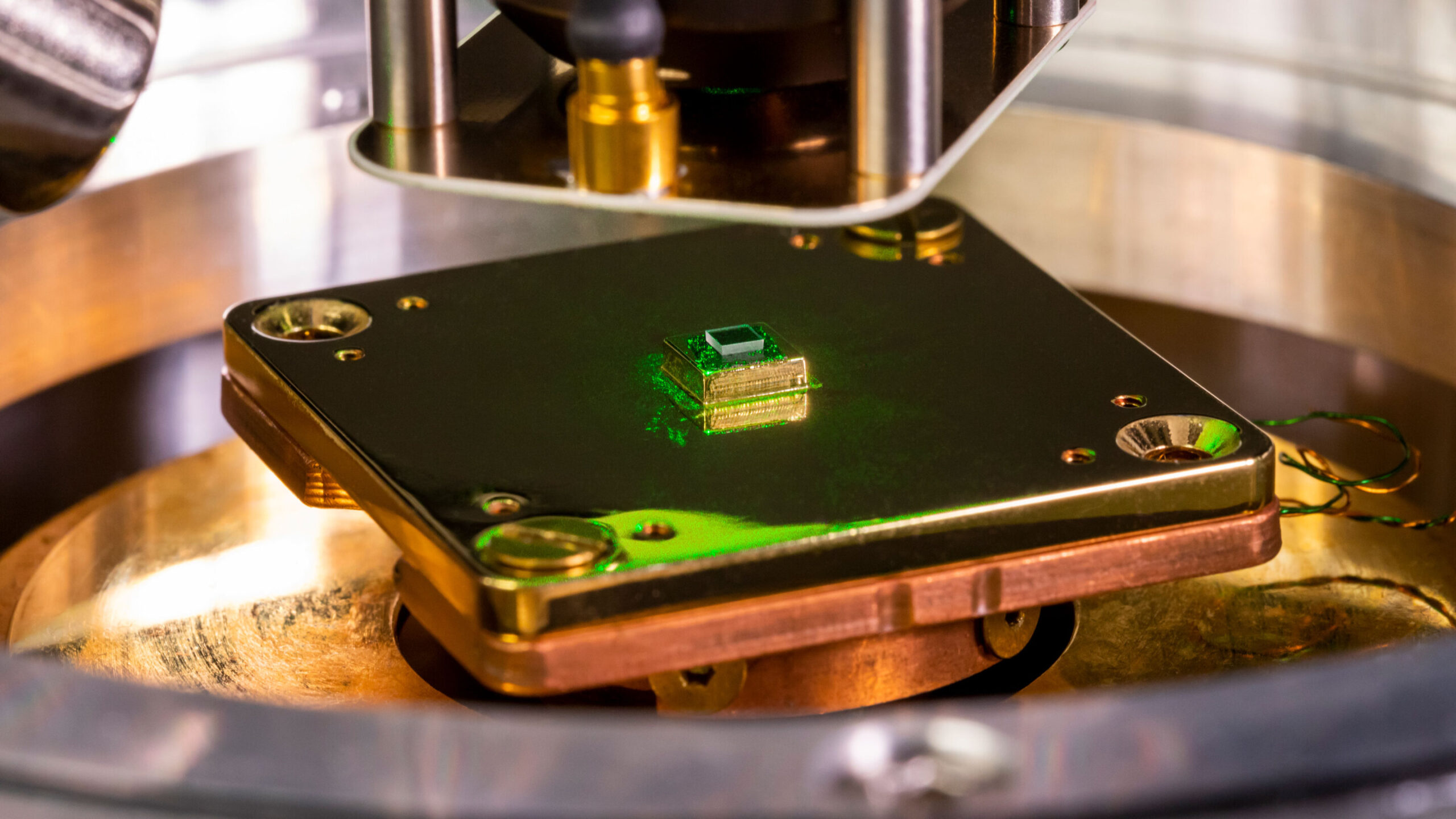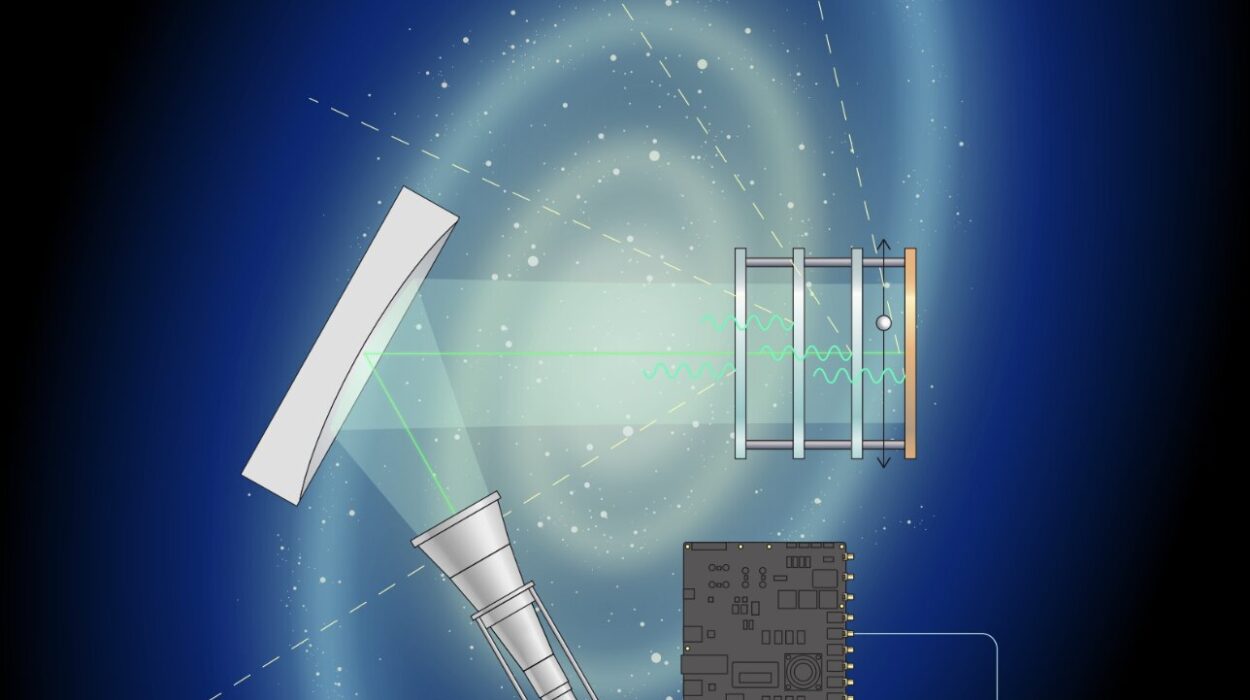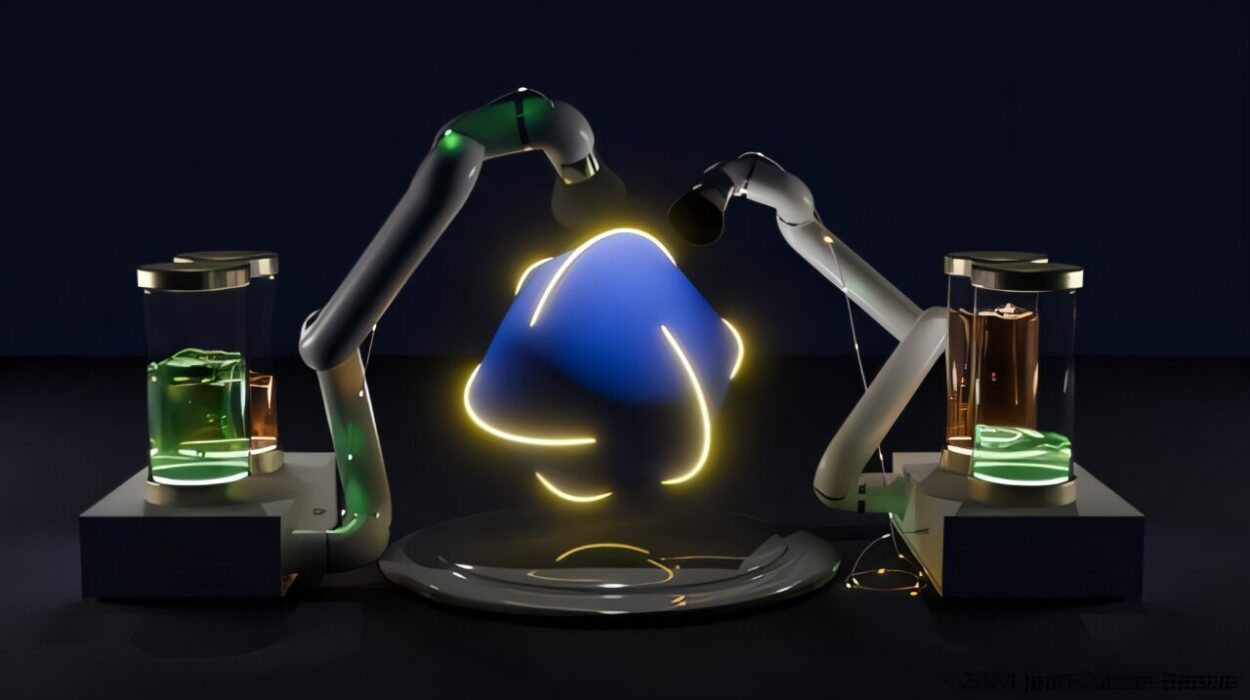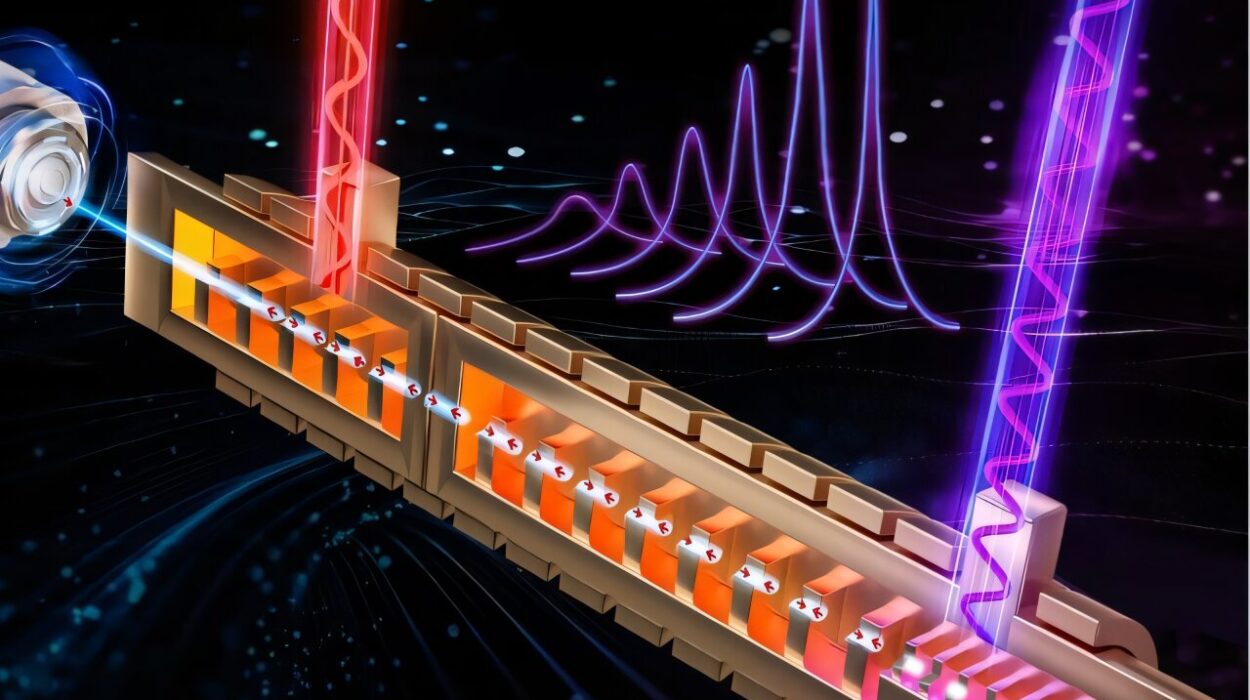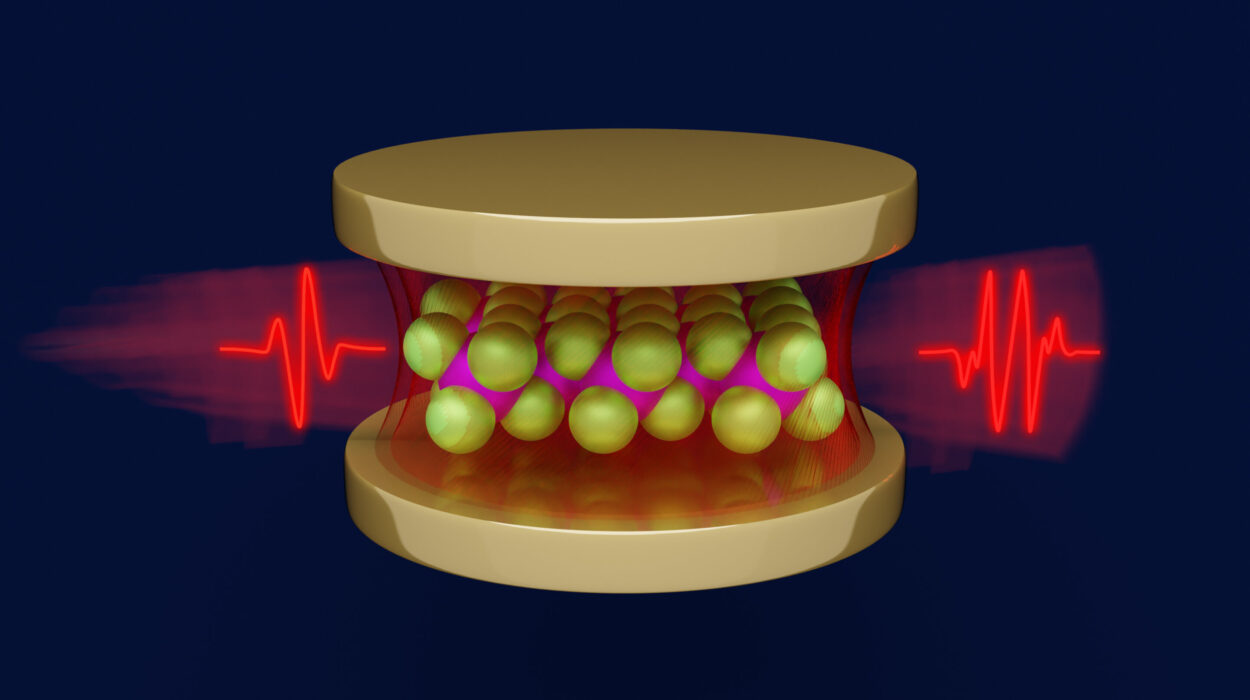In the microscopic world, things move and interact in ways that are almost beyond comprehension. Electric currents skip and hop from point to point, while magnetic fields twist and curl through atomic structures, behaving in unpredictable, often baffling ways. For years, scientists have dreamed of seeing these phenomena in action—catching a glimpse of the forces that shape our world at the quantum scale. Now, a team at Princeton has made a breakthrough that promises to bring these dreams to life.
With a revolutionary new sensor made from diamonds, researchers can now peer into the very heart of magnetic phenomena at a scale so small it was once thought unobservable. This new technique, reported in Nature in November, offers 40 times the sensitivity of previous methods, allowing scientists to witness the subtle magnetic fluctuations that exist in materials like graphene and superconductors—materials that hold the key to future technologies, from lossless power lines to levitating trains.
The Diamond That Sees the Invisible
At the core of this remarkable advance is a diamond-based sensor that is anything but ordinary. The diamonds used by the Princeton team are far purer than natural diamonds, and each one contains engineered defects at an almost atomic scale—one missing atom in a lattice of billions. These tiny imperfections, known as nitrogen vacancy centers, interact with magnetic fields in a way that makes them perfect for sensing these forces. It’s like having the world’s tiniest compass, able to feel the pull of magnetic fields where no one thought it possible.
But what sets this new approach apart is the way the team arranged these defects. Instead of treating them as isolated points in space, the researchers placed two defects incredibly close together, just 10 nanometers apart. This tiny distance allows the two defects to interact with each other in ways that give rise to something truly extraordinary: quantum entanglement. The electrons in these two nitrogen atoms begin to act in unison, their measurements perfectly correlated even across the vast distances between them.
Nathalie de Leon, an associate professor of electrical and computer engineering at Princeton, explained the significance of this breakthrough: “You have this totally new kind of playground. You just can’t see these things with traditional techniques.” By tapping into the power of quantum entanglement, the team unlocked the ability to probe magnetic fields at previously unreachable length scales, revealing hidden patterns and behaviors in materials that were once shrouded in mystery.
The Quantum Leap: Entangling Two Atoms
The process of creating these entangled nitrogen vacancies began with a high-speed nitrogen molecule, traveling at more than 30,000 feet per second. The molecule smashed into the diamond with an explosive force, breaking apart and embedding its nitrogen atoms into the diamond’s crystal lattice. By carefully controlling the amount of energy involved in the collision, the researchers could control how deep the nitrogen atoms penetrated, ensuring they were just the right distance apart to interact quantum-mechanically.
When the two nitrogen atoms are this close, they begin to exhibit quantum entanglement—a phenomenon so strange that even Albert Einstein once dismissed it as “spooky action at a distance.” In the world of entanglement, measuring one atom’s properties immediately reveals the properties of the other, no matter how far apart they are. The researchers realized that by exploiting this entanglement, they could effectively measure and isolate the magnetic noise that typically drowns out subtle quantum signals.
“It’s like having two eyes,” said Philip Kim, an experimental physicist at Harvard, who was not involved in the study. “The entangled sensors can triangulate signatures in the noisy fluctuations and effectively home in on the source of the noise.” This unique approach allows researchers to directly observe and measure the magnetic behavior within real materials, rather than relying on artificial setups like carefully constructed arrays of atoms.
From Theory to Reality: The Spark of Curiosity
The story behind this breakthrough begins in the midst of the COVID-19 pandemic, when much of the world was forced to work remotely. Princeton’s Jared Rovny, a postdoctoral fellow, was just starting his research when the pandemic curtailed access to the lab. Without the ability to conduct experiments in person, Rovny and de Leon turned their attention to theoretical work—specifically, exploring magnetic noise in condensed matter physics. What started as a side project born out of curiosity soon turned into a groundbreaking discovery.
“At the time, sensing correlations in magnetic noise was not a topic of scientific conversation,” de Leon recalled. “It was only after we started formalizing it that we realized how powerful it was.” Rovny, with his background in nuclear magnetic resonance (NMR), was particularly attuned to the potential of interacting particles and their correlations. His curiosity led him to ask questions no one had considered before, and his work eventually paved the way for the quantum entanglement technique that would transform the team’s research.
The entanglement of the nitrogen vacancy centers was initially a curiosity-driven idea, but it quickly proved to be more than just a theoretical curiosity. “What I realized is that if you entangled them,” Rovny explained, “the presence or absence of a correlation sort of puts its fingerprint onto the system.” This “fingerprint” provided a simple yet incredibly powerful method for bypassing the complexities of other techniques, allowing the researchers to make meaningful measurements with just a single, straightforward experiment.
The Power of Quantum Sensors in Real Materials
Until now, most techniques for studying magnetic fluctuations had been limited to artificial systems—meticulously crafted arrays of atoms that were designed to behave in a specific way. But the beauty of this new approach is that it can be applied directly to real materials. Philip Kim, who collaborates with de Leon, described it as “allowing scientists to probe real materials directly.” This breakthrough opens up a whole new world of possibilities for studying materials that could revolutionize technology in the coming decades.
Materials like graphene, which promises to unlock new kinds of electronics, and superconductors, which enable the development of powerful medical imaging tools, are just the beginning. By using this diamond-based quantum sensor, scientists can study how electrons move through these materials, how magnetic vortices form in superconductors, and how these phenomena could be harnessed for practical use. This new technique gives researchers the ability to explore these materials at a level of detail that was previously impossible, offering insights that could lead to next-generation technologies.
Why This Research Matters
The implications of this research go far beyond the laboratory. Superconductors, for example, are already used in some of the most advanced medical technologies, like MRI machines. In the future, they may enable technologies like lossless power transmission or even floating trains that levitate above magnetic tracks. Graphene, meanwhile, could pave the way for ultra-fast, efficient electronics, potentially revolutionizing everything from computing to renewable energy.
By developing a way to directly measure the magnetic fluctuations in real-world materials at a microscopic scale, this research opens up new avenues for exploring the behavior of materials that will define the technologies of tomorrow. As Nathalie de Leon aptly put it, this is “a totally new kind of playground” for scientists—a chance to observe and understand the hidden forces that govern the materials we rely on every day.
The ability to see the invisible, to uncover the hidden patterns of magnetism and quantum mechanics, is a powerful tool. It’s not just about pushing the boundaries of science for the sake of knowledge; it’s about using those boundaries to shape the future in ways we can only begin to imagine. This breakthrough in quantum sensing is a glimpse into that future, one where the smallest of forces can lead to the most profound of discoveries.
More information: Nathalie Leon, Multi-qubit nanoscale sensing with entanglement as a resource, Nature (2025). DOI: 10.1038/s41586-025-09760-y. www.nature.com/articles/s41586-025-09760-y
